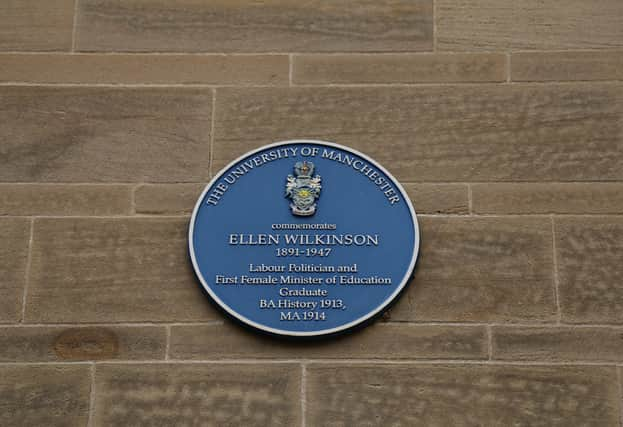The Jarrow Crusaders and their 300 mile march to London


The 1930’s was a time of grinding poverty across large areas of the UK. Economic strife had gripped many in the working class and a significant number of people were out of work.
Frustrated at the increase in the number of job losses in the north east of England, 200 unemployed men from Jarrow set off on a march to London. It would come to be known as the Jarrow Crusade and is one of the most iconic events of 20th century Britain.
Advertisement
Hide AdAdvertisement
Hide AdThe decade would end with the beginning of the Second World War, but in 1936 the world was in the midst of a global depression.
Areas that relied on heavy industry, such as Jarrow, were hit particularly hard. In 1930 the Jarrow shipyard launched its 1000th ship, but a downturn in orders led to the yard closing - at the expense of thousands of jobs.
In 1935, Ellen Wilkinson of the Labour Party was elected to the town’s parliamentary seat. She would come to be a major part of the crusade.
The following year the situation in Jarrow worsened and leaders in the town created the plan to march the 300 miles down to Westminster to ask for the help that the people of Jarrow desperately needed.
Advertisement
Hide AdAdvertisement
Hide Ad1200 volunteers came forward to be part of the march, and 200 were selected.
Along with Wilkinson, the group set off on 5 October. Support for the marchers, or ‘crusaders’ as they were nicknamed’ was strong throughout the country.
Examples of this include being given access to specially heated baths in Barnsley and those suffering ill health from the long march received medical care.
At every stop along the way, the marchers were offered clothes, shoes and, usually, a place to sleep.
Advertisement
Hide AdAdvertisement
Hide AdAt the beginning of November, the marchers arrived at Parliament. Wilkinson presented a petition with over 11,000 signatures from the people of Jarrow as well as a second petition with signatures the crusaders picked up on the march.
The strong support from members of the public was not reflected in Parliament, as the government policy remained unchanged. The issue of high unemployment only
The march has become synonymous with the efforts of people fighting for a better life for themselves and their families.
In a time where large numbers of the population were living on the brink, 200 men from Jarrow and their MP marched to the doorstep of the nation’s leaders and demanded to be listened to.
Advertisement
Hide AdAdvertisement
Hide AdAlthough their efforts failed to influence change in legislation, it showed the strength in numbers of people who wanted to show those in power hundreds of miles away that they would stand up and be counted.
Ellen Wilkinson would go on to have a prominent role in politics, becoming the education minister when Clement Attlee formed his first government in 1945.
The Jarrow Crusaders were a symbol of hope in a decade where, for many, hope was in short supply.
Comment Guidelines
National World encourages reader discussion on our stories. User feedback, insights and back-and-forth exchanges add a rich layer of context to reporting. Please review our Community Guidelines before commenting.